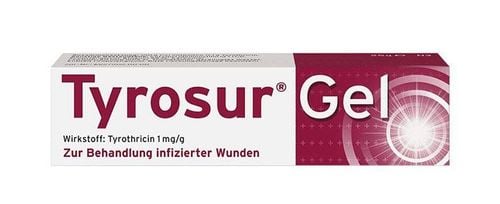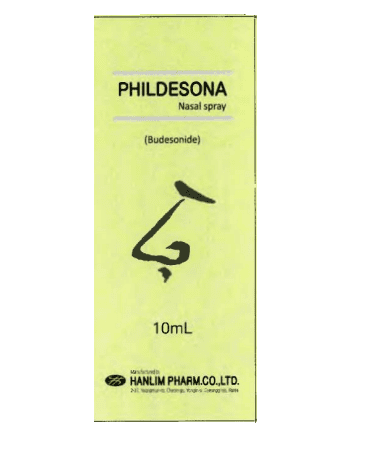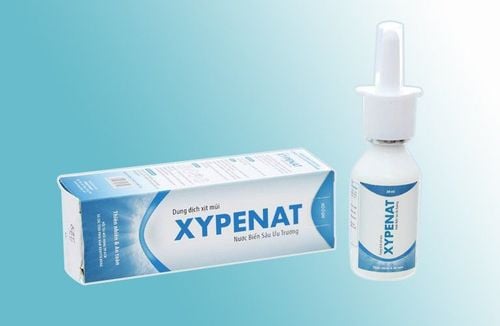This is an automatically translated article.
Nazoster medicine is made in the form of a nasal spray solution, with the main active ingredient being Mometasone furoate. The drug is used in the symptomatic treatment and prevention of allergic rhinitis and related diseases of the nose.
1. Uses of the drug Nazoster
What is Nazoster? This is a nasal spray with the active ingredient Mometasone furoate and other excipients. Mometasone furoate is a topical glucocorticosteroid with local anti-inflammatory properties at doses without systemic effects. The mechanism of anti-inflammatory and antiallergic action of Mometasone furoate is based on the inhibition of mediators of allergic reactions. Significant clinical effects usually appear as early as 12 hours after the first dose.
Nazoster is indicated for use in the following cases:
Treatment of seasonal and year-round rhinitis symptoms in people 2 years of age and older; Prophylaxis of seasonal allergic rhinitis in adults 12 years of age and older. Prophylactic treatment is recommended 2 - 3 weeks before the pollen season; Symptomatic treatment of nasal tumors (including obstruction and loss of smell) in persons 18 years of age and older. Nazoster is contraindicated for use in the following cases:
People who are sensitive to the ingredients of the drug; Do not use on unhealed wounds in patients with recent nose surgery or trauma; People infected with viruses, fungi and tuberculosis; Children under 2 years old.
2. How to use and dose of Nazoster
Shake the medicine well before use. When using for the first time or when the nozzle has not been used for about 14 days, you should test spray about 6-7 times into the air to show when the standard spray has been applied. Each spray contains approximately 100 μg of mometasone furoate suspension, equivalent to 50 micrograms of mometasone furoate.
2.1 How to use Nazoster instructions for use are as follows:
Shake the vial gently, remove the protective cap; Gently clean both sides of the nose; Close one nostril, place the spray tip of the vial into the other nostril, keeping the bottle straight while the tip is slightly tilted forward; Breathe slowly, spray into the nose by pressing your finger once while inhaling; Exhale through the mouth, repeat the process in step 4 one more time into the same nostril; Remove the vial from the nose, exhale through the mouth; Repeat the process from steps 3 - 6 for the other nostril; After use, wipe the spray bottle with a paper towel or clean cloth, and close the cap. 2.2 Dosage Treatment of seasonal allergic rhinitis or perennial rhinitis:
Adults (including the elderly) and adolescents: The recommended dose for prophylaxis and treatment is 200mcg/day divided into 2 sprays 50mcg in both nostrils x 1 time/day. After symptoms are under control, a maintenance dose of 100 mcg/day in total is divided into 1 spray of 50 mcg in both nostrils once daily. If symptoms are not adequately controlled, the maximum dose may be up to 400mcg: 4 sprays in both nostrils once daily. Once symptoms are controlled, the dose should be reduced. The effect of the drug is noticeable 12 hours after taking the first dose; Children 2-11 years: The total recommended daily dose is 100mcg divided into 1 spray of 50mcg into both nostrils once daily. When used for children, adults need to spray for children. Treatment of nasal polyps:
For adults aged 18 years and over: The total recommended daily dose is 400mcg divided into 2 sprays (50mcg/spray) x 2 times/day into each nostril. If symptoms are adequately controlled, the total dose may be reduced to 200 mcg divided into 2 sprays (50 mcg/spray) x 1 time per day in each nostril.
2.3. Overdose Due to the insignificant systemic bioavailability of Nazoster spray, in the event of an overdose, the patient should be monitored and the appropriate dose re-prescribed. Overdose symptoms may include difficulty breathing, nosebleeds, burning pain in the nose,... Patients should notify their doctor or go to the nearest hospital for timely examination and treatment.
2.4. Missed dose Patients should spray as soon as they remember. If it is almost time for the next dose, skip the missed dose and take the next dose as usual (do not make up for it).
3. Nazoster side effects
Some side effects that patients may experience when using Nazoster include:
Headache; Epistaxis; Bloody and coagulated mucus; Sore throat ; Have an itchy nose; Sore nose; Nasal ulcers; Sneezing ; Hypersensitivity reactions: Bronchospasm and dyspnoea, anaphylaxis and angioedema (rare); Disorders of taste and smell (rare). When experiencing side effects when using Nazoster, patients should notify their doctor immediately to receive appropriate advice.
4. Caution when using Nazoster
Some notes for patients to remember before and while taking Nazoster include:
The spray should be used with caution in people with latent or active TB infections, bacterial or systemic infections, fungal infections untreated, herpes simplex eye infection; During long-term treatment (people using Nazoster for many months or longer) should check for changes in the nasal mucosa. If a local fungal infection develops in the nose or pharynx, the spray should be discontinued or other appropriate treatment initiated. If persistent irritation in the nasopharynx occurs, discontinuation of Nazoster should be considered; There is no evidence of hypothalamic-pituitary-adrenal (HPA) axis compression with long-term use of Nazoster. However, careful monitoring is recommended if long-term switching from systemic corticosteroids to Nazoster 0.05% spray is recommended. In these patients, if there are signs of adrenal insufficiency, treatment with corticosteroids should be accompanied by other treatments and regularly checked and evaluated health; During the transition from corticosteroids to Nazoster 0.05% spray, some patients may experience joint pain, myalgia, fatigue, and depression. In addition, this conversion can cause allergic symptoms such as allergic conjunctivitis and eczema; Possible immunosuppression in patients receiving corticosteroids before certain infections (chicken pox, measles); Be careful with people with hyperthyroidism; Use caution when giving the drug to children because children are very sensitive to the side effects of the drug. If necessary, the dose will be reduced; Careful, appropriate dose adjustment for the elderly because the elderly often take many drugs, are very sensitive to the main effects and side effects of the drug (due to poor tolerance, the mechanism of regulation of homeostasis reduce); Use caution when driving or operating machinery because the drug can cause dizziness, lightheadedness, temporary headache; There have been cases of complications of nasal septum perforation or glaucoma due to the use of inhaled corticosteroids (very rare); The safety of the drug has not been established for pregnant and lactating women, so this group of people should consult a doctor before taking the drug.
5. Nazoster drug interactions
Some Nazoster drug interactions that patients should be aware of:
Mometasone furoate is a substrate of CYP3A4. Co-administration of mometasone furoate with loratadine had no appreciable effect on plasma concentrations of loratadine and its major metabolite; Nazoster drugs can be combined with drugs for the treatment and prevention of bronchial asthma (as prescribed by the doctor); Do not combine Nazoster with other inhaled drugs with systemic effects (such as respiratory anesthetics). Nazoster drug is used in cases of allergic rhinitis, acute sinusitis,... When taking the drug, the patient should absolutely follow all the instructions of the doctor to ensure the highest treatment effectiveness and reduce the risk. chance of side effects.
Please dial HOTLINE for more information or register for an appointment HERE. Download MyVinmec app to make appointments faster and to manage your bookings easily.













